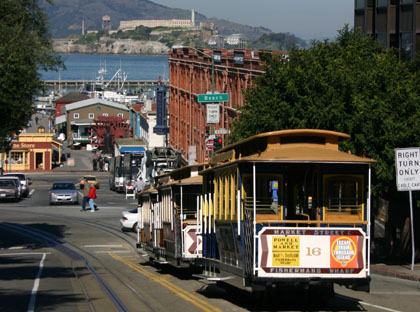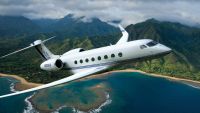
| Home | Spain |
Sydney |
San Francisco |
Paris |
Las Vegas |
Maui |

San Francisco history is storied, and it essentially starts with the arrival of the Spanish. San Francisco is blessed with an enviable harbor, thanks to its location on the San Francisco Bay, and this is largely responsible for attracting Spanish settlers in the late 1700s. Though Spain claimed the California region in the 1500s and other European explorers set foot on the California coast in subsequent years, it wasn't until the 1700s that a Spanish soldier spotted the San Francisco Bay.
1776 is one of the more interesting years in the history of San Francisco, as this is when an expedition led by Juan Bautista de Anza selected the site for a settlement. About 30 Spanish-speaking families came with de Anza, and they made the trip from Mexico, which was part of New Spain at the time. Two members of this expedition founded the Mission San Francisco de Asis in 1776. The original mission building had to be rebuilt in 1791, and it is the oldest surviving structure in San Francisco. In 1817, a medical building that served as part of the Mission San Francisco de Asis was built in what is today the nearby city of San Rafael. There is a small museum at the San Rafael Mission, and it offers insight into San Francisco history. As for the original Mission San Francisco de Asis, it was named after the Catholic patron saint of animals, St Francis of Assisi, and it gave rise to San Francisco's name. This is one of the more interesting San Francisco facts for those who like interesting trivia.
During the early 1800s, the area around San Francisco exported tallow and hides, which attracted trade and newcomers. One of the newcomers to the area, an Englishman named William Richardson, saw potential for a true city, and in 1822, he founded the site for modern-day San Francisco. About 25 years later, the famous California Gold Rush brought significant interest to the new California Territory, and it marks a major turning point in San Francisco history. One of the more interesting San Francisco facts has to do with the population explosion that followed the Gold Rush. In 1848, the city was only home to around 900 people. Once the Gold Rush started that year, the population of the city increased from around 900 to around 26,000 in just six months. Some of the newcomers brought sourdough bread with them, and to this day, this bread is a local favorite. One of the top things to do in San Francisco is head to Fisherman's Wharf to enjoy some clam chowder in a sourdough bread bowl.
During the California Gold Rush, entrepreneurs in San Francisco sought ways to capitalize on the wealth that was being generated. In 1852, Wells Fargo was founded, and this bank and financial services company helped the city to grow. The Wells Fargo headquarters can be found in town, and anyone who is interested in learning more about the history of San Francisco can visit its small museum. The development of the Port of San Francisco in the 1800's saw increased activity of all kinds, and Levi Strauss started making his now famous blue jeans in 1853. One year prior to that, Domingo Ghirardelli established his famous chocolate factory, which gave rise to Ghirardelli Square. The original factory can still be visited at Ghirardelli Square, and it anchors what is today a shopping and upscale living complex.
San Francisco truly began to thrive in the latter half of the 1800s, and during this period, Chinatown was created and the city's famous cable cars started carrying passengers up Clay Street. This was the era that also saw the building of scores of Victorian houses, which are dazzling architectural pieces. While many of the San Francisco Victorian houses either fell victim to the earthquake of 1906 or were subsequently demolished for certain reasons, many remain. Known as Painted Ladies, these historic homes figure among the top attractions in the city.
The 1906 San Francisco Earthquake history is a huge part of the overall history of the city. This devastating earthquake caused buildings to collapse and led to a fire that ravaged 75 percent of the city. For many people, the 1906 earthquake is the most interesting occurrence in the history of San Francisco, and photos of the fateful disaster show just how devastating it actually was. San Francisco would be rebuilt in rapid form, however, and it again started to thrive, becoming a financial capital of sorts.
One of the more interesting San Francisco facts has to do with the 1960's hippie movement. The city's Haight Ashbury district was the center of this movement, and to this day it maintains a decidedly eclectic and bohemian appeal. It was in the 1980's that extensive high-rise development hit downtown San Francisco, and the dot-com boom of the 1990's was an especially good time for many residents. While the bottom dropped for many of the city's technological companies in the following decade, technology and entrepreneurship are still very much mainstays of the city's economy. Tourism is also a mainstay of the San Francisco economy, and few cities in the country offer as much for the traveler.
